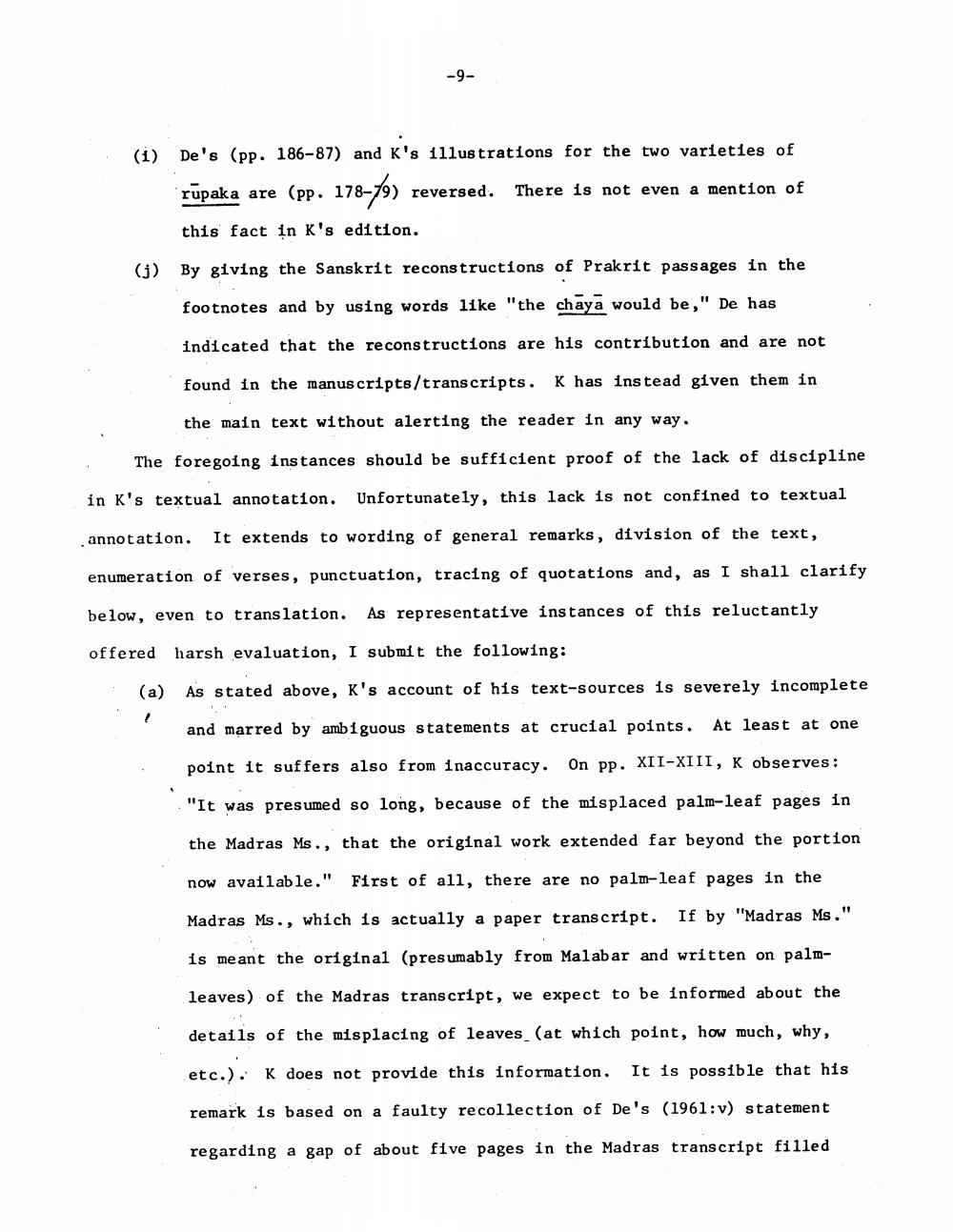________________
-9
(1) De's (pp. 186-87) and K's illustrations for the two varieties of
rūpaka are (pp. 178-79) reversed. There is not even a mention of
this fact in K's edition. (j) By giving the Sanskrit reconstructions of Prakrit passages in the
footnotes and by using words like "the chaya would be," De has
indicated that the reconstructions are his contribution and are not
found in the manuscripts/transcripts. K has instead given them in
the main text without alerting the reader in any way.
The foregoing instances should be sufficient proof of the lack of discipline
in K's textual annotation. Unfortunately, this lack is not confined to textual
annotation.
It extends to wording of general remarks, division of the text,
enumeration of verses, punctuation, tracing of quotations and, as I shall clarify
below, even to translation. As representative instances of this reluctantly
offered harsh evaluation, I submit the following:
(a) As stated above, K's account of his text-sources is severely incomplete
and marred by ambiguous statements at crucial points. At least at one
point it suffers also from inaccuracy. On pp. XII-XIII, K observes:
"It was presumed so long, because of the misplaced palm-leaf pages in
the Madras Ms., that the original work extended far beyond the portion
now available."
First of all, there are no palm-leaf pages in the
Madras Ms., which is actually a paper transcript. If by "Madras Ms." is meant the original (presumably from Malabar and written on palm
leaves) of the Madras transcript, we expect to be informed about the
details of the misplacing of leaves (at which point, how much, why, etc.). K does not provide this information. It is possible that his
remark is based on a faulty recollection of De's (1961:v) statement
regarding a gap of about five pages in the Madras transcript filled




